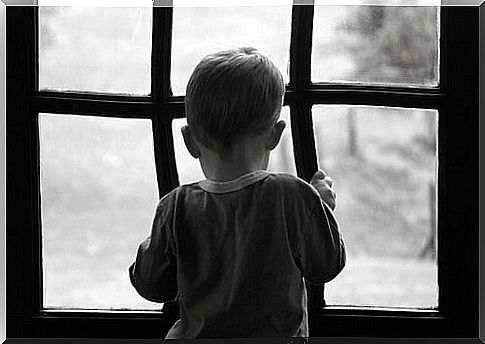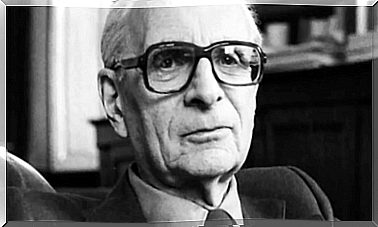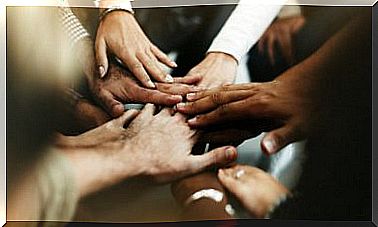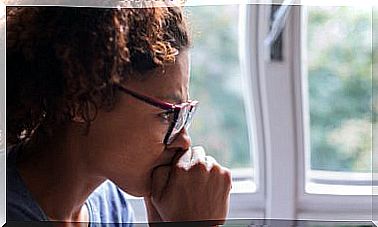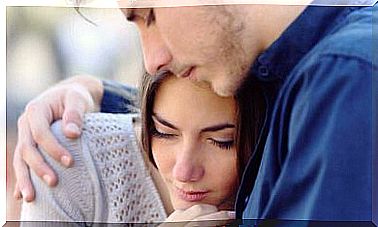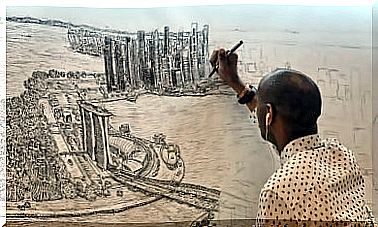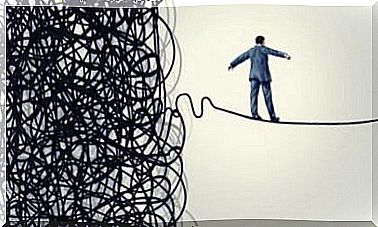The Weight Of The Open Wound: When The Victim Becomes An Executioner

The open wound sometimes forms an abyss infected by resentment, anger and vulnerability. It is experienced by a part of those people who have been victims of abuse, neglect or mistreatment. The mark of these experiences and the inability to heal them often generates that they project that deep discomfort on others, sometimes showing maladaptive behaviors.
Everyone deals with pain in their own way, with greater or lesser skill. However, there are those who do it in the worst possible way: aggressively. The reason? There are profiles in whom several determining factors suddenly come together. On the one hand, there is the severity of the trauma experienced; on the other, the social and support resources available to the person, as well as certain biological and even genetic factors.
Now, the most determining factor is undoubtedly the personality factor. We know, for example, that certain people characterized by reactive narcissism use their pain as a throwing weapon. Their identity as a victim, and the weight of a past of abuse, often and almost unwittingly turn them into camouflaged executioners. They are people who cannot control the impulse to retaliate and project their anger towards others in different ways.

When the open wound of trauma brings aggressiveness
The concept of ‘victim’ with such is often much discussed. One thing we must understand first is that not everyone copes with trauma in the same way. There are those who, thanks to their psychological resources or the good support received, face a dramatic event effectively, detaching themselves from their identity as a victim in a short time.
Other people, on the other hand, integrate for a large part of their lives that damage, that open wound that, somehow, leaves more and more consequences. Post-traumatic stress disorder, for example, is one of those effects. Now, the question that may come to mind is why this happens. For what reason is there someone who, far from overcoming that painful fact of the past, carries it with them like a burden?
Furthermore, is there an explanation why a person exposed to traumatic events might react in a maladaptive or violent way at some point? At the University of Monterotondo, Italy, they carried out an interesting study led by Dr. Giovanni Frazetto to analyze this.
The data obtained were the following.
Early trauma and the MAOA gene
According to this work carried out in 2007, being exposed to certain negative events during our first 15 years of life usually leaves an obvious mark on our emotional and psychological tissue. However, while some people will be more likely than others to overcome or face these events, others will present some difficulty.
- In this last group are people with the MAOA gene, linked mainly to the male gender.
- This gene is in turn associated with a very specific behavioral phenotype, that of greater aggressiveness.
- Therefore, something that could be seen in the study is that children who had grown up without a parent, who had been neglected, received abuse or grown up in an environment with alcoholism problems, showed more aggressive and antisocial behaviors when they reached adulthood.
- It was also associated with a greater inclination to drug abuse, as well as a clear difficulty in establishing solid and meaningful social and affective relationships.

The open wound and vulnerability that prevents us from perceiving the pain of others
An open wound is an unsolved problem that engulfs us more and more every day. It is a way of chronifying the identity of the victim because we define ourselves basically not by what we do today, but by what happened to us in the past. There are those who are so caught up in their vulnerability, in repressed anger, in the fear that does not let them breathe and in the weight of memory that, almost without realizing it, they develop ’emotional blindness’.
Stop seeing and perceiving emotional realities outside your own . This lack of empathy derives from the open wound itself, from that trauma that generates changes in our brain and that somehow ends up modifying the personality. The most complicated part of all this is that at some point, whoever feels like a victim can become an executioner.
- This is done, for example, by the adolescent who suffers abuse or neglect at home, and shows violent behavior in the institute.
- So does the person who at certain times feels so vulnerable and defenseless that he overreacts to defend himself.
- The open wound can make one end up understanding violence as a form of language. If as children we were witnesses or victims of aggressive behavior, it is likely that in adulthood we end up applying those same models.
Open wounds and trauma, how are they treated?
Today, the most ideal approach to treating trauma is undoubtedly trauma-focused cognitive behavioral therapy. This tool also has a large scientific bibliography that supports its effectiveness (Echeburúa and Corral, 2007; Cohen, Deblinger and Mannarino, 2004).
On the other hand, we also have acceptance and commitment therapy (Hayes, Strosahl, Wilson, 1999, 2013). It is a type of third-generation cognitive behavioral therapy that seeks to reduce anxiety and fear to better handle threatening situations.
Likewise, and no less important, it is necessary to work on anger management in case it has already made an appearance. Something like this begins to show itself even in childhood. It is known, for example, that about 45% of children who witness family violence have behavioral problems.
Behind the open wound there is anxiety, there is sadness, anger and a series of mental images that we cannot erase. Such dramatic realities must be dealt with by specialized professionals. No one deserves to live in a present where suffering extinguishes their potential to be happy.
